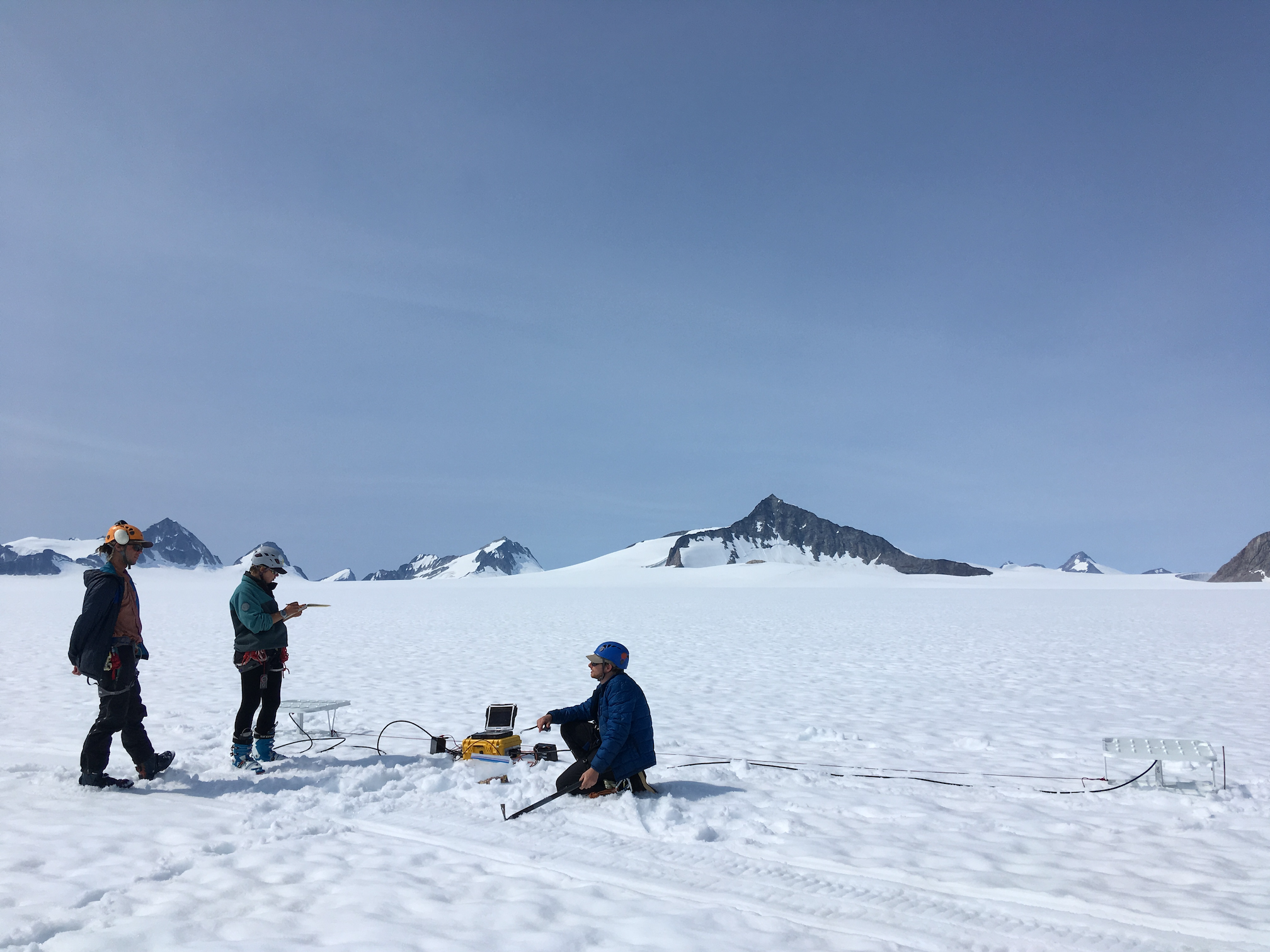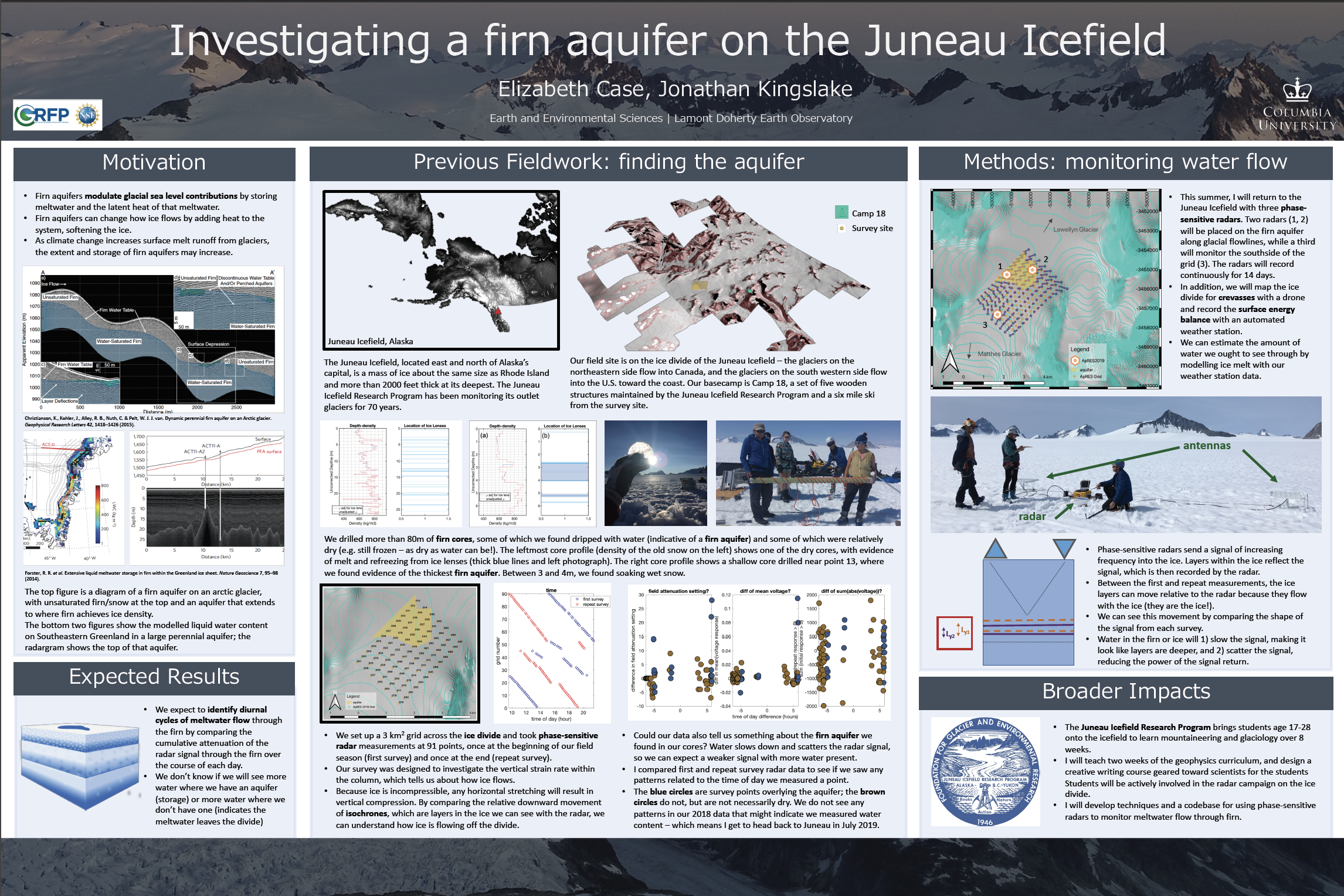Elizabeth Case
Research

Measuring Firn Compaction
Firn is old snow (> 1 year) and firn compaction is the process that turns snow into glacial ice. An understanding of firn compaction is vital for constraining past, present, and future climate. Changing firn compaction affects altimetry-based estimates of mass balance across glaciers and ice sheets, and changing firn thickness affects the amount of time air in the firn can mix with air in the atmosphere, which in turn affects the age difference between air in bubbles found in glacial ice, and the surrounding ice crystals.
Phase-sensitive Radar
My PhD work, under Dr. Jonny Kingslake, has focused primarily on using phase-sensitive radar to measure firn compaction and compare these measurements to firn models. In work that has been submitted for publication and presented at many conferences, we show good agreement between firn models and the compaction rates measured by phase-sensitive radar. In essence, this means the community has a new, lightweight, inexpensive way of measuring continuous firn compaction, which could help us understand both temporal changes in compaction rates, and the impacts of environmental variables like temperature and accumulation rates, on the compaction process.

Measured and modelled compaction velocities and densities from Fletcher Promontory (FP) and Skytrain Ice Rise (SIR). Left panels are from FP, and the right are from SIR, top panels are compaction velocities and bottom are densities. Yellow circles in the top panels are compaction velocities derived from pRES measurements using coincident cores. Uncertainties are derived by taking into account the signal-to-noise ratio of each englacial reflector used to computed vertical velocities and are represented by the width of the bar symbols. Grey circles in the bottom panels are ice-core measured densities. The dashed and solid lines show the model output, where the solid red lines are generated from a model tuned to pRES vertical velocities, and the dashed lines are generated from a model tuned to core densities.
p.s this is what some ApRES data sounds like
Ronne Ice Shelf, Antarctica (Nicholls et al. 2015)
../../assets/audio/AntarcticSonify.wav
East GRIP, Greenland (not sure where this is from, so sorry!)
../assets/audio/EGripSonify.wav
Juneau Icefield
../assets/audio/JuneauSonify.wav
A wall at Lamont
../assets/audio/wall_sonify.wav
Juneau Icefield Research Program
The Juneau Icefield Research Program (JIRP) takes 30 high school, college, and postgraduates across the Juneau Icefield over 8 weeks in the summer season. Along the way, students learn about mountaineering, art and writing, and scientific research. I joined JIRP as a faculty instructor in 2018 and 2019, bringing phase-sensitive radars into the field to collect data about firn compaction on temperate glaciers, as well as taking firn cores and GPR measurements, collaborting with artist Hannah Perine Mode, and teaching students introductory glaciology.

Click to download a full version of this poster.
Laboratory experiments
I am part of a newly funded NSF grant that will investigate the effects of temperature and overburden pressure on firn compaction. More info coming in 2021.